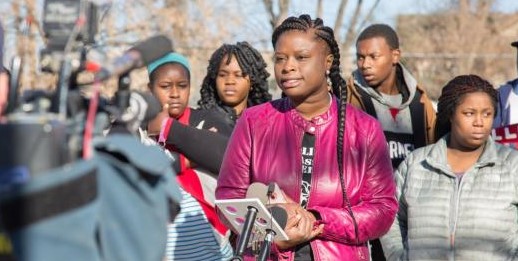CSMS Magazine
If a black man were to stand on top of a building and threaten to jump to his death before an audience of bewildered individuals, I’m sure the reaction would be alarming. Few people—victims of some deep seated prejudices and consumed by racial hatred—may probably rejoice. Horror would definitely engulf the vast majority in the audience. Some of them might try to talk the man out of doing it, but this would not suffice to save him. Others would surely act to preempt his stupid action before he kills himself.
I use this metaphor to show there are times, especially in times of trouble, talk may fall short of bringing about real solution to rampant problems; and the problem of race relations in America seems to have reached a tipping point. So, it appears. Since the death of Alton Sterling and Philando Castile—two black men senselessly killed by white cops—and the killing of 5 police officers in Dallas last week, America looks like a country on the brink, going soul searching in a last dish effort to avert a catastrophe.
Systemic racism against people of color is nothing new. What is new is the ability to raise instant awareness when someone is being brutalized by police, as the shocking video of the dying Philando shows—thanks to the power of technology. It was reported live on Facebook. Countless of studies show how minorities are unfairly treated by law enforcement. The statistics are there. If you are Black in America, you are 7 times more likely to be killed in an encounter with police than if you were a white person. This year alone, close to 600 citizens of color have already been killed by police. Only 3% of those murders resulted into a judicial condemnation, whereas 97% of the cops got away with murder. With such a huge indifference, recalcitrantly nonchalant, awkwardly racist and implicitly protected by the criminal justice system, rogue cops have no fear in doing away with the life of an innocent black person.
No one denies the risks associated with policing, especially in urban areas, and the death of 5 police officers in Dallas truly hurts. This feeds into the narrative, picturing people of color, in particular black males as untrustworthy, fierce, violent and bluntly dangerous. Also, this can only strengthen the hands of those who seek the tiniest accuse to unleash their barrage of terror on defenseless citizens. Already, the instigators are urging “an open season” for police on black males. You know what that means! In a police encounter, a black man is generally greeted with suspicion while for a Caucasian, protection is the first thing that comes to mind.
Are we truly a dysfunctional society? Are we on a backroad spiral to 1968 as many in the media seems to indicate? The answer to both questions is NO, but if tangible measures are not taken to ensure we are indeed a society well equipped with the wherewithal to provide every one of its citizen full protection under the law, we may very well head for an endless continuum.
They say it’s a conversation that is lacking. Really? A conversation? This assertion is full of hypocrisy. We’ve been having this conversation for years. We now know this “honest” conversation will do nothing to rein in bad cops—criminals in uniforms—whose sole objective is to survive the day, rather than to perform their duty as the training requires.
The irony is that all this is happening against the backdrop of an African-American holding the highest office in the land. This reality shows that symbolic justice is far from being the perfect remedy for race relations in America. Back in 2008, America gleefully applauded the coming of his first black president. To the establishment, this was a long overdue contrition. I myself naively believed it; but I quickly found out that symbolic justice is simply just that: symbolic. Symbols can’t heal the deeply rooted divide that is eating away our confidence in the judicial system. Action perhaps can; and criminal justice reform is what needs to be done.
Note: Dr. Ardain Isma teaches Research at Embry-Riddle University. He also teaches Cross-cultural Studies at University of North Florida (UNF). He is the Editor-in-Chief for CSMS Magazine. Ardain Isma is also a novelist. To read a synopsis, you can click here: Books
Like us on Facebook: www.facebook.com/csmsmagazine


